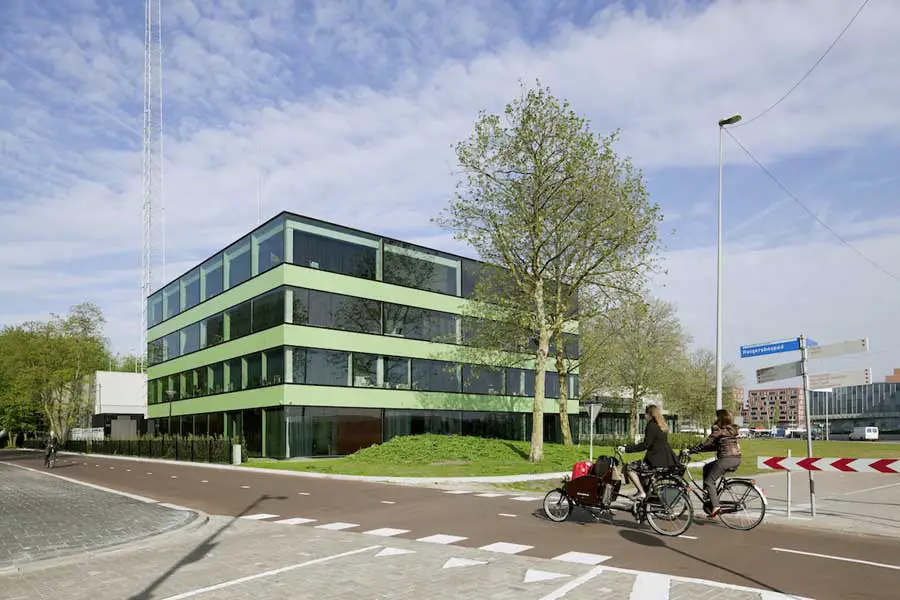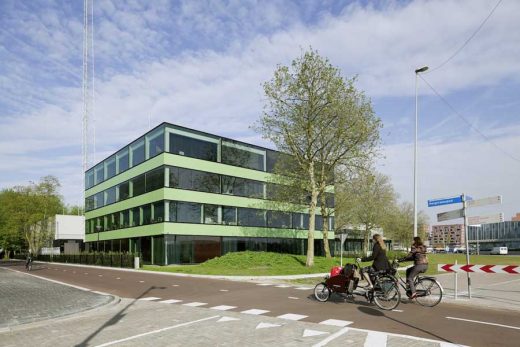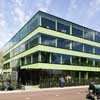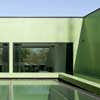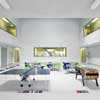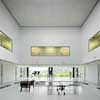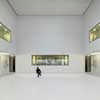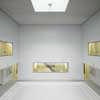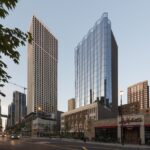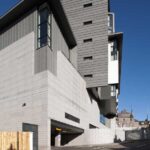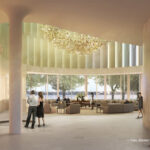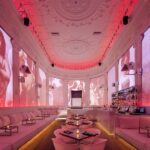Junky Hotel Amsterdam, Dutch residential project for heroin addicts, Holland drug center
Drug Addict Hotel Amsterdam : Dutch Residential Project
Junkie Hotel Amsterdam, The Netherlands design by Atelier Kempe Thill Architects
post updated 28 December 2024
Location: Amsterdam-Zuidoost, The Netherlands
Dates built: 2007-12
Design: Atelier Kempe Thill
JUNKY HOTEL AMSTERDAM
Residential Project for Heroin Addicts
Fringe Group in the Center
26 Jun 2012
Junkie Hotel Amsterdam
The Amsterdam-Bijlmermeer housing development, which was erected in the nineteenseventies based on CIAM principles under the direction of Siegfried Nassuth, has been being overhauled since the mid-nineteen-nineties due to a wide range of social and structural problems.
In this case, urban renewal means, above all, radically demolishing large-scale, honeycombed housing blocks and replacing them with differentiated, smallscale block development and terraced housing. At the same time, the existing shopping center is being upgraded through the addition of a wide range of new, public facilities and thus assumes supraregional importance.
In the northern part of the downtown area, a new market square is being constructed, surrounded by the district town hall, a swimming pool, the Bijlmer Park Theater, and the already existing police station. In addition, the established public park is being regenerated and made better connected with the district center via the square.
In 2007, within the framework of a negotiation procedure, Atelier Kempe Thill received the commission to plan a residential hotel for heroin addicts located at a sensitive transition between the square and the park. The task here was extremely delicate since such facilities are very unpopular with the population and normally have a miserable existence in container structures on the urban periphery in industrial or railway wastelands, almost never realized as a new building in the direct vicinity of central, public institutions and parks.
For the architects, this posed an interesting question: How should the typology of the “Drug Addicts’ Hotel” be manifested within the urban context? On the one hand, an attempt was made to realize the building as an emancipated and consciously “publicly” designed institution in the ambivalent spatial realm between park, theater, and swimming pool. On the other hand, as a result of its sensitive user group, the building is designed as a rather anonymous, reserved structure that forms a building ensemble with the adjacent police station.
Collective Living Room
This residential hotel is defined by a differentiated use of space. On the one hand, “long stay” and “short stay” clients are given accommodations in the building, on the other, methadone is administered here and training and employment programs also take place within the building. With forty-five square meters per person, the living space provided is very generous and far exceeds social housing standards, which is surely remarkable from a social point of view.
The square plot of land that was available initially, measuring twenty-five meters square, turned out to be rather unfavorable for the organization of the spatial program since the many (usually small) rooms all require direct daylight. The building is therefore organized along the property boundaries, which results in a programmatic ring in terms of layout.
Very compact access in the form of an “excess pressure stairway” is positioned in the interior, meaning that a second emergency escape route is unnecessary. Within the ring, a “vacuum” for which there is no programmatic counterpart is created and interpreted as an atrium. On the ground floor, there is a large, central common room that opens up over three stories and is realized within the structure as a cube measuring nine meters on each side. The impact of the space is further enhanced by the lowering of the floor level in the atrium area, whereby its communal use is also emphasized optically. This space emerged almost “incidentally” from the logic of the plot characteristics and was not originally part of the task at all. It forms the center of the new building and, as a generous “communal living room,” can be used for various activities that contribute to the socialization of the residents.
Above the atrium is a roof terrace, which is designed as an intimate and introverted courtyard. In it, the residents can withdraw and relax away from the public space.
Light and Neutrality of Use
The building is owned by a building society and has been rented by a foundation for a period of ten years. Yet unclear is whether the building will still be used as a “Drug Addicts’ Hotel” after 2022, or whether it should be used for other programs down the road. In order to make it possible for the owner to make simple adaptations within the structure, Atelier Kempe Thill was, for the first time, faced with the challenge of creating a structure that is truly neutral in function. The building is executed as a frame construction, with non-load-bearing interior walls and all the technical installations also integrated into the building independently of the load-bearing structure. As a result of these measures, the structure can be adapted to new uses relatively quickly and without great expense.
Due to its compactness and its use, it is important that a considerable amount of natural daylight is available within the building. The façade was therefore generously glazed and allows significant light to penetrate the interior. The central atrium is illuminated by a skylight and receives additional light via the façade. Space-dividing walls are often executed in glass, which gives rise to expansive visual connections within the building that are necessary for facilitating an overview and for social interaction.
Junky Hotel Amsterdam : further information
Photos © Architektur-Fotografie Ulrich Schwarz, Berlin
Junkie Hotel Amsterdam images / information from Atelier Kempe Thill
Location: Anton de Komplein 232, 1102 DR Amsterdam Zuidoost, The Netherlands, western Europe
Amsterdam Buildings
Major New Dutch Buildings
Amsterdam Architecture Tours – tailored guided walks of the city
Dutch Capital Hotel Buildings
Hotel Nhow Amsterdam RAI
Hotel Nhow Amsterdam RAI, North-Holland
Hotel The Craftsmen
Hotel The Craftsmen
Hotel Casa
Hotel Casa
Recent Amsterdam building by Atelier Kempe Thill on e-architect:
Recent Dutch building design by Atelier Kempe Thill on e-architect:
Moerwijk Housing, Den Haag
Amsterdam Architecture Designs – architectural selection below:
Amsterdam Buildings – historic building information
Dutch Architectural Designs
Major New Dutch Buildings
Netherlands Architecture Designs – chronological list
Comments / photos for the Junkie Hotel Amsterdam – Dutch Residential Project for Heroin Addicts page welcome

